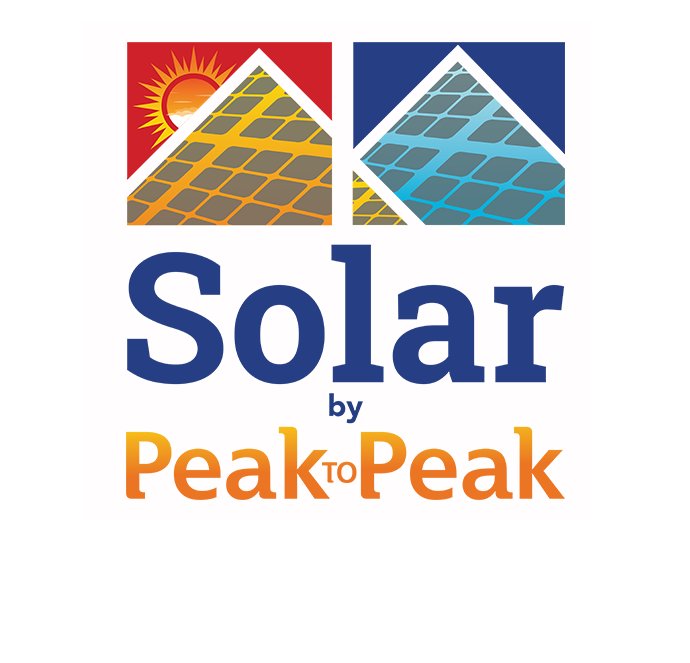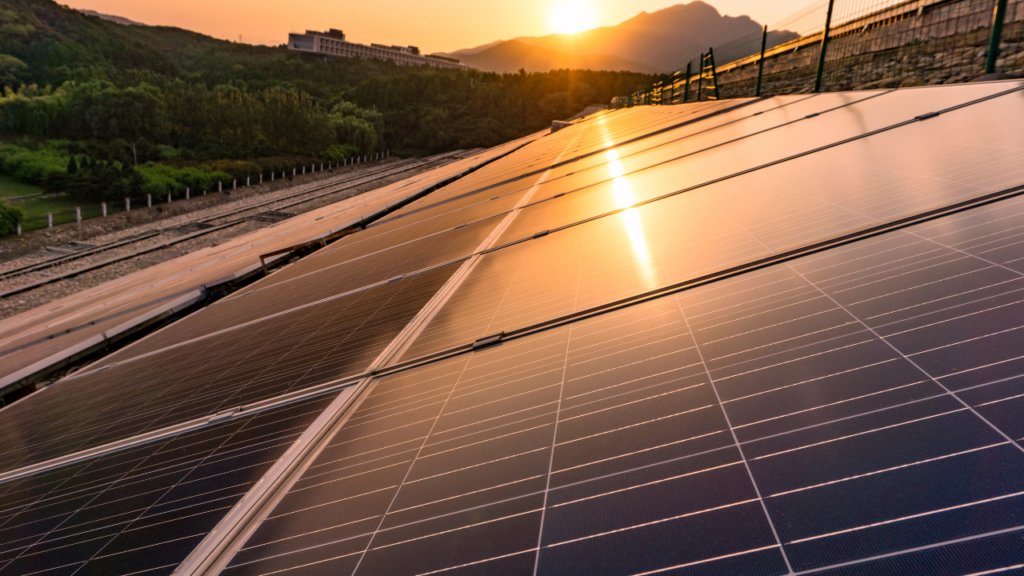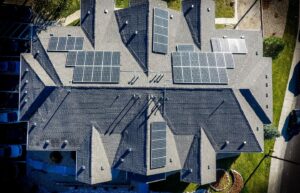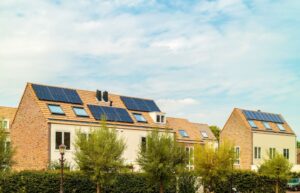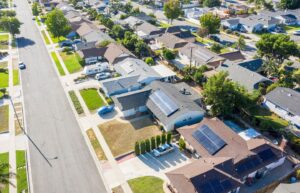In today’s rapidly changing world, harnessing renewable energy sources has become more crucial than ever. One such source is solar power, which offers a sustainable and eco-friendly solution to meet our energy needs. While grid-tied solar systems are popular in urban areas, off-grid solar systems have emerged as a game-changer for remote locations. These self-sufficient systems provide electricity without relying on the traditional power grid.
In this blog post, we will explore the advantages of off-grid solar systems for remote locations and why they are gaining popularity among environmentally conscious individuals and businesses alike. From understanding what an off-grid solar system entails to discussing various types of setups and factors to consider before installation, we’ll cover it all! So let’s dive into the fascinating world of off-grid solar systems that empower us with independence from the grid while reducing our carbon footprint simultaneously.
Understanding Off-Grid Solar Systems
Off-grid solar systems are a self-sufficient way to generate electricity without relying on the traditional power grid. These systems capture sunlight and convert it into usable energy for various applications by utilizing solar panels, batteries, and inverters. Unlike grid-tied systems that rely on continuous access to the utility grid, off-grid systems operate independently and can provide electricity even in remote locations.
These systems consist of several components working together harmoniously. Solar panels collect sunlight and convert it into DC (direct current) electricity. This energy is then stored in batteries for later use when no direct sunlight is available or during nighttime. An inverter converts the DC power from the batteries into AC (alternating current) electricity that can be used to power appliances and devices. Understanding off-grid solar systems gives us insight into how to harness renewable energy sources efficiently while reducing our reliance on fossil fuels.
What is an Off-Grid Solar System?
Off-grid solar systems are self-sufficient energy solutions that operate independently from the traditional power grid. They harness the sun’s energy through photovoltaic (PV) panels and store it in batteries for use when needed, eliminating the need to rely on utility providers.
An off-grid solar system consists of three main components: PV panels, a charge controller, and a battery bank. The PV panels convert sunlight into electricity, which is then stored in the battery bank via the charge controller. This stored energy can be used to power appliances and devices during periods of low or no sunlight. By being completely disconnected from the grid, off-grid solar systems provide reliable access to electricity even in remote areas where connecting to the grid may not be feasible or cost-effective.
Off-Grid vs. Grid-Tied Solar Systems: Which is Better?
When it comes to deciding between off-grid and grid-tied solar systems, the answer ultimately depends on your specific needs and circumstances. Off-grid solar systems are completely independent of the electrical grid, relying solely on solar power to meet energy demands. This makes them ideal for remote locations where connecting to the grid may be difficult or expensive.
On the other hand, grid-tied solar systems are connected to the utility grid and allow for a two-way flow of electricity. Excess energy generated by your solar panels can be fed back into the grid, earning you credits or even monetary compensation from your utility company. This option is great if you live in an area with reliable access to the electrical grid and want to take advantage of incentives like net metering programs.
However, it’s important to consider that a grid-tied system will not provide electricity during power outages or emergencies unless paired with battery storage or backup generators. Additionally, off-grid systems require more upfront investment due to battery banks and other equipment needed for self-sufficiency. However, they offer complete independence from fluctuating energy prices and potential blackouts caused by storms or infrastructure issues. Choosing between these two options should be based on location, budget constraints, reliability requirements, and personal preferences.
Types of Off-Grid Solar Systems
There are several types of off-grid solar systems available, each catering to different needs and requirements. When choosing an off-grid solar system, it’s important to consider factors such as your power needs, location, budget, and available resources. Each type has its advantages and disadvantages, depending on individual circumstances. It’s crucial to assess your requirements before deciding which type will work best for you.
Solar-Only Systems
Solar-only systems are a popular choice for off-grid solar installations. These systems rely solely on the power generated by solar panels to meet all of their energy needs. They do not have any backup generators or connections to the grid.
One of the advantages of solar-only systems is their simplicity. With no additional components like batteries or generators, these systems are straightforward and easy to install. They also require less maintenance since there are fewer parts that can potentially fail. Additionally, solar-only systems offer a clean and renewable source of energy, reducing reliance on fossil fuels and minimizing environmental impact.
Solar-only systems provide a cost-effective solution for remote locations where access to traditional power sources may be limited or non-existent. By harnessing the abundant sunlight and converting it into usable electricity, these off-grid solar setups enable individuals and communities in isolated areas to enjoy reliable power without relying on external infrastructure.
Solar System with Generator Backup
In remote locations where sunlight may be limited or unpredictable, a solar system with generator backup offers a reliable solution for continuous power supply. This type of off-grid solar system combines the benefits of solar energy and the reliability of a backup generator.
The generator serves as a supplementary power source that can be used during periods of low sunlight or high energy demand. It automatically kicks in when the batteries are running low, ensuring an uninterrupted power supply to meet the needs of your remote location. With this setup, you can have peace of mind knowing that you will still have access to electricity even on cloudy days or during peak usage times.
Hybrid Solar Systems
Hybrid solar systems combine the best of both worlds: solar power and backup generators. These systems are designed to provide electricity even when sunlight is limited or unavailable.
In a hybrid system, solar panels generate electricity daily and charge batteries for nighttime use. If the battery levels run low, a backup generator kicks in to provide additional power. This ensures that you have a reliable source of electricity no matter the weather conditions or time of day. Hybrid systems offer flexibility and peace of mind, making them an excellent choice for remote locations where a consistent power supply is crucial.
Benefits of Off-Grid Solar Systems
Off-grid solar systems offer a range of advantages for those looking to power their remote locations independently. One major benefit is the freedom from reliance on the grid. With an off-grid system, you can generate electricity and be self-sufficient, even in areas without access to traditional power lines.
Another advantage of off-grid solar systems is their suitability for remote locations. Whether it’s a cabin in the woods or a farm in the countryside, these systems provide reliable power wherever you need it most. They are especially beneficial in areas prone to blackouts or where connecting to the grid may be expensive or impractical. By harnessing energy from sunlight, off-grid solar systems ensure a consistent power supply regardless of external factors like weather conditions or utility infrastructure limitations.
Independence from the Grid
One of the key advantages of off-grid solar systems is the independence they provide from the traditional power grid. With an off-grid system, you are no longer reliant on utility companies for your electricity needs. This means that even in remote locations where access to the grid may be limited or non-existent, you can still enjoy a reliable and sustainable source of energy.
Being independent from the grid gives you greater control over your energy consumption and costs. You no longer have to worry about rising electricity prices or power outages. Instead, you can generate your own clean and renewable energy right at home, reducing your reliance on fossil fuels and minimizing your carbon footprint. Whether it’s powering a cabin in the woods or a remote research station, off-grid solar systems offer unparalleled freedom and self-sufficiency when it comes to meeting your energy needs.
Ideal for Remote Locations
Off-grid solar systems are particularly advantageous for remote locations where access to the traditional power grid is limited or nonexistent. In these areas, relying on off-grid solar power allows individuals and communities to become self-sufficient in meeting their energy needs. Whether it’s a cabin deep in the woods or a research station in an isolated region, off-grid solar systems provide a reliable and sustainable source of electricity. They offer the flexibility and independence required to live comfortably without being dependent on external sources of power.
Installing an off-grid solar system in remote locations eliminates the need for long-distance power transmission lines, which can be costly and challenging to maintain. It also reduces reliance on fossil fuels such as diesel generators that require regular refueling. Off-grid solar systems harness the abundant sunlight available in most remote regions, converting it into clean energy that can be stored and used whenever needed. This not only reduces carbon emissions but also ensures a consistent power supply even during extreme weather conditions or natural disasters when other forms of energy may be disrupted.
Cost Savings in the Long Run
Cost savings, in the long run, are one of the key advantages of off-grid solar systems. While the upfront cost may be higher compared to grid-tied systems, the investment pays off over time. With an off-grid system, you can eliminate or significantly reduce your electricity bills by generating your own power from renewable sources like solar energy.
By using solar panels to harness sunlight and convert it into usable electricity, you can tap into a free and abundant source of energy. This means that once you have covered the initial installation costs, your ongoing expenses for electricity will be drastically reduced or even eliminated entirely. Over time, this translates into substantial savings on utility bills, allowing you to recoup your investment and enjoy long-term financial benefits from your off-grid solar system.
Factors to Consider in Off-Grid Solar Systems
When it comes to off-grid solar systems, there are several important factors that you need to consider. First and foremost, you must assess your power needs. This involves calculating the amount of electricity required to meet your daily energy consumption, taking into account appliances like refrigerators, lights, and electronics.
Power Needs Assessment
Power needs assessment is a crucial step in designing an off-grid solar system for remote locations. Before installing a solar system, it’s important to determine the amount of power required to meet your needs. This involves assessing your energy consumption patterns and calculating the wattage needed for various appliances and devices.
Start by making a list of all the electrical equipment you plan to use, including lights, appliances, electronics, and any other devices that will rely on solar power. Note down their wattages or amps and estimate how many hours each item will be used per day. This information will help you calculate your daily energy consumption and give you an idea of the size of the solar panels and battery bank required to meet your power needs efficiently.
By conducting a thorough power needs assessment, you can ensure that your off-grid solar system is designed to provide enough electricity for your daily usage without overloading or underperforming. It helps in determining the appropriate sizing of components such as solar panels, batteries, and inverters for optimal performance and efficiency in meeting your energy requirements while living off the grid.
Choosing the Right Solar Panels
Choosing the right solar panels is a crucial step in setting up an off-grid solar system. There are several factors to consider when making this decision. You need to determine the power requirements of your remote location. This will help you determine how many solar panels you need and what their wattage should be.
It’s important to consider the efficiency and durability of the solar panels. Look for high-efficiency panels that can generate more electricity with less sunlight. Additionally, opt for durable panels that can withstand harsh weather conditions.
By carefully considering these factors, you can choose the right solar panels for your off-grid system and ensure optimal performance and longevity. Remember, investing in high-quality solar panels upfront will pay off in terms of energy production and cost savings in the long run!
Selecting the Appropriate Battery
Selecting the appropriate battery is a crucial step in designing an off-grid solar system. The battery is responsible for storing excess energy generated by the solar panels and supplying power during periods of low sunlight or at night. When choosing a battery, it’s important to consider factors such as capacity, voltage, and lifespan.
Capacity refers to the amount of energy that can be stored in the battery, and it should be based on your power needs assessment. Voltage determines the compatibility between the battery and other components of your system. Additionally, considering the lifespan of the battery is essential because it affects long-term cost savings. Opting for high-quality batteries with longer lifespans may require a larger upfront investment but can lead to greater efficiency and durability over time.
Inverter considerations
When setting up an off-grid solar system, choosing the right inverter is crucial. The inverter is responsible for converting the DC (direct current) power from your solar panels into AC (alternating current) power that can be used to run household appliances and electronics.
There are a few key factors to consider when selecting an inverter. First, determine the total power load you will need to handle. This will help you determine the appropriate size and capacity of your inverter. Additionally, consider whether you want a pure sine wave or a modified sine wave inverter. Pure sine wave inverters produce cleaner and more stable electricity, making them ideal for sensitive electronics.
Remember that the efficiency of your inverter also matters. Look for an inverter with high-efficiency ratings to ensure minimal energy loss during the conversion. Consider any additional features or functionalities that may be important to you, such as built-in battery charging capabilities or remote monitoring options.
Consider these considerations when choosing an inverter for your off-grid solar system to ensure optimal performance and compatibility with your specific needs.
Cost and Installation of Off-Grid Solar Systems
Determining the cost of off-grid solar systems is an important consideration for anyone looking to invest in this renewable energy solution. The cost can vary depending on factors such as the size of the system, quality of materials, and installation requirements. It’s essential to conduct thorough research and obtain multiple quotes from reputable suppliers or installers to get an accurate estimate.
Installation processes and considerations also play a significant role in off-grid solar systems. Proper placement of solar panels, wiring connections, and battery storage are crucial aspects that need careful attention during installation. Additionally, considering factors like local building codes, permits, and any necessary upgrades to existing electrical infrastructure should not be overlooked. Seeking professional guidance or consulting with experienced off-grid solar experts can ensure a smooth installation process while adhering to safety standards.
Determining the Cost of Off-Grid Solar Systems
Determining the cost of off-grid solar systems is an important step in planning for your remote location’s energy needs. The cost can vary depending on factors such as the size of the system, the quality of components used, and any additional features or backup options you choose to include.
To get an accurate estimate, it is recommended to consult with a professional installer who can assess your specific requirements and provide a detailed quote. They will consider factors like your power consumption needs, available sunlight in your area, and any specific site requirements that may affect installation costs. By getting multiple quotes from different installers, you can compare prices and ensure you are getting the best value for your investment.
Remember that while off-grid solar systems require an initial upfront investment, they offer long-term savings by reducing or eliminating monthly electricity bills. Additionally, many governments and utility companies offer incentives or rebates for installing renewable energy systems. So when determining the cost of off-grid solar systems for remote locations, consider both the immediate expenses and potential long-term financial benefits.
Installation Process and Considerations
Installing an off-grid solar system requires careful planning and consideration. Once you have determined your power needs and chosen the right solar panels, it’s time to tackle the installation process.
First, make sure you have all the necessary tools and equipment on hand. This may include a ladder, drill, screwdriver, wire cutters, and safety gear. Before beginning the installation, carefully read the manufacturer’s instructions for each solar system component.
Next, determine where to install your solar panels. The ideal location is one that receives maximum sunlight throughout the day with minimal shade obstruction. Mounting options include roof mounts or ground mounts, depending on your specific situation.
Ensure proper wiring connections between components such as solar panels, batteries, charge controllers, and inverters. It’s important to follow electrical code guidelines to ensure safety during installation. Perform thorough testing after installation to ensure everything is functioning correctly.
Remember that hiring a professional for installation can provide peace of mind and ensure optimal performance of your off-grid solar system in remote locations.
How to Build Your Own Off-Grid Solar System
Building your own off-grid solar system can be a rewarding and cost-effective way to harness renewable energy. To get started, you’ll need some essential equipment and tools such as solar panels, batteries, inverters, and wiring.
Once you have all the necessary components, it’s important to design your solar power system based on factors like your energy needs and location. Consider the number of panels required to meet your electricity demands efficiently. Next, you’ll want to install the system properly by mounting the panels securely and connecting them with the appropriate wiring. It’s also crucial to follow safety guidelines during installation to ensure everything is done correctly.
By building your own off-grid solar system, you can gain independence from traditional power sources and reduce your carbon footprint while enjoying reliable electricity in remote locations or during emergencies.
Equipment and Tools Needed for a DIY Solar System
When it comes to building your own off-grid solar system, having the right equipment and tools is essential. Here are some of the key items you’ll need for a successful DIY project.
First and foremost, you’ll need solar panels to capture sunlight and convert it into electricity. The number of panels will depend on your power needs and available space. Additionally, you’ll need mounting brackets or frames to securely install the panels on your property.
Next, an inverter is necessary to convert the solar panels’ DC (direct current) power generated into AC (alternating current) power that can be used in your home. Make sure to choose an inverter that matches the capacity of your system.
Other important tools include wiring cables, connectors, circuit breakers, and fuses for properly connecting all components of your solar system. A battery bank with deep-cycle batteries is also crucial for storing excess energy generated during sunny days for use at night or during cloudy weather.
Investing in high-quality equipment and tools will ensure a reliable off-grid solar system that meets your energy needs effectively!
Designing a Solar Power System
Designing a solar power system requires careful consideration and planning to ensure optimal performance. You need to determine your energy needs by assessing the appliances and devices you will be powering. This will help determine the size of your solar array and battery bank.
Next, choose the right solar panels for your system. Consider factors such as efficiency, durability, and warranties when selecting panels. Additionally, calculate the number of panels needed based on their wattage output and available space.
Once you have chosen your panels, it’s time to select an appropriate battery. The battery capacity should be sufficient to store excess energy generated during sunny periods for use when sunlight is limited or unavailable.
Designing a solar power system involves carefully considering your energy needs, choosing the right components, and ensuring they are properly sized for optimum efficiency.
Installing the System
Installing the system is a crucial step in setting up your off-grid solar power system. Before starting, gather all the necessary equipment and tools, such as solar panels, batteries, inverters, mounting brackets, and wiring.
Begin by designing the layout of your solar array and determining the optimal location for maximum sunlight exposure. Install the mounting brackets securely on a sturdy surface like a roof or ground mount. Connect the solar panels to each other using MC4 connectors and attach them to the mounting brackets.
Next, connect the wiring from the solar panels to charge controllers, which regulate and manage energy flow between panels and batteries. Connect the batteries to their respective charge controllers and then connect them to an inverter that converts DC power into AC power for use in your home appliances.
Ensure all connections are secure and properly insulated. Test your system by turning on some lights or appliances powered by your off-grid solar system. Regularly monitor its performance to ensure efficiency and make any necessary adjustments along the way.
Solar By Peak To Peak – Your Solar Experts
Off-grid solar systems offer numerous advantages for remote locations. They provide independence from the grid, making them ideal for areas with limited or unreliable access to electricity. With off-grid systems, you can generate your own clean energy and reduce your reliance on fossil fuels.
Investing in an off-grid solar system offers environmental benefits by reducing carbon emissions while providing reliable power in remote locations without relying on traditional electrical infrastructure. Whether it’s for a cabin in the woods or an isolated research station deep in Antarctica – harnessing sunlight has never been easier!
For help with residential solar systems, contact Solar By Peak To Peak today!
